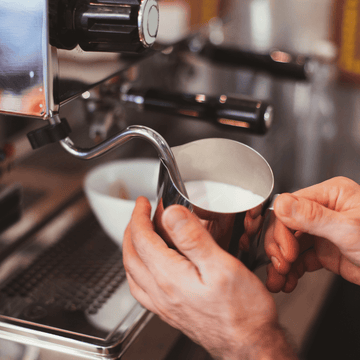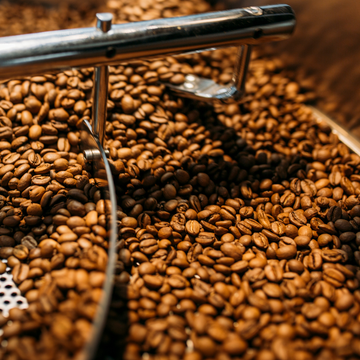1. Choose the Right Milk: Whole milk is preferred for beginners as it’s higher fat content will make steaming a little easier. once you get the technique down you can use other types like 2%, skim, or plant-based options.
2. Use a Cold Stainless Steel Pitcher: This will give you a few more seconds to add air before the milk comes to temperature.
3. Measure your milk: Use the cup you will be making your drink in and fill it while leaving 1”-2 “ of space on the top. This will ensure that you steam just the right amount of milk for your drink along with the espresso.
4. Purge the Steam Wand: Before steaming, release a bit of steam to clear any water in the wand.
5. Submerge the Steam Wand: Place the wand just below the milk surface and turn on the steam. You'll hear a hissing sound. If your machine has an adjustable steam pressure valve, turn it on until the milk in the pitcher starts to spin.
6. Create Microfoam: To froth, position the wand's tip near the surface, allowing the milk to spin and froth. Keep the steam wand off-center. You want to create the smallest bubbles possible to increase the creaminess of the milk. The size of the bubbles created will be the distance from the milk and the end of your steam wand. So you’ll want to just move it down the slightest amount.
7. Monitor Temperature: Aim for around 150°F (65-70°C). Too hot can scald the milk; too cold won't create the desired texture. I do this by keeping the crease of my dominant hand on the pitcher, as it’s the most sensitive part of the hand. Once it reaches the point where you can’t keep your hand there anymore is right around the right temperature needed.
8. Turn Off the Steam Wand: Once you reach the desired temperature, turn off the steam keeping the wand inside the milk.
9. Wipe and Purge Again: Wipe the steam wand with a damp cloth and purge it to remove any remaining milk.
If you have any large bubbles in the milk you can spin the milk in the pitcher or gently tap it on the counter to pop those larger bubbles. Remember, practice improves your technique. Adjust the angle and depth of the steam wand to find what works best for you.





